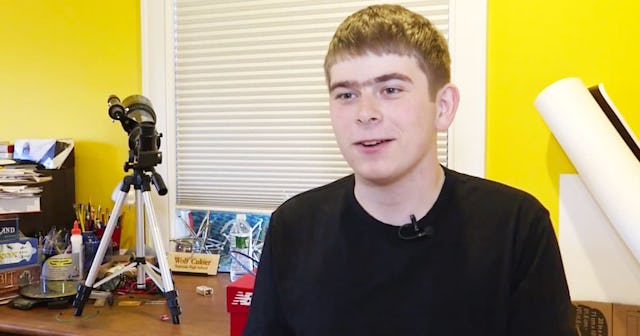Teen Discovers Enormous New Planet While Interning For NASA

The newly-identified planet is 6.9 times bigger than Earth and orbits two suns
In the latest chapter of “The Kids Are Alright,” a teenager from New York has literally discovered an entire planet while interning for NASA. The high school senior was looking for a foreign system while observing outer space, and boy did he find one.
Wolf Cukier, a 17-year-old intern for NASA’s Goddard Space Flight Center in Greenbelt, Maryland, was given the job of combing through data on star brightness. While doing just that through the facility’s Transiting Exoplanet Survey Satellite mission (TESS), he found a slight darkness in one of the foreign system’s suns located 1,300 light-years from Earth.
That darkness Cukier observed ended up being a planet that is 6.9 times larger than Earth and orbits two stars — scientists call that a “circumbinary planet.”
“I was looking through the data for everything the volunteers had flagged as an eclipsing binary, a system where two stars circle around each other and from our view eclipse each other every orbit,” Cukier said in a press release from NASA. “About three days into my internship, I saw a signal from a system called TOI 1338. At first I thought it was a stellar eclipse, but the timing was wrong. It turned out to be a planet.”
The planet, now called TOI 1338 b, is the first circumbinary planet detected by TESS. Circumbinary planets are difficult to detect because they orbit two stars instead of one, like the Earth does. Now, let’s break this down so we can all understand just what this means: when a planet crosses in front of its star, it causes a dip in that star’s brightness. The event is called a transit, which TESS’s cameras can capture (and which Cukier noticed). However, TESS can only see the transits of planet 1338 b when it passes by the bigger star in the system, not the smaller star.
Despite all of the technology NASA uses, sometimes something else is needed when trying to study foreign bodies that are hard to detect.
“These are the types of signals that algorithms really struggle with,” says Veselin Kostov, a research scientist at the SETI Institute and Goddard. “The human eye is extremely good at finding patterns in data, especially non-periodic patterns like those we see in transits from these systems.”
It’s really something that the human eye can be more reliable than technology these days. Cukier initially thought the slight darkness was just one star in the foreign system passing in front of the other, but the timing wasn’t right. That’s when Cukier and his eyeballs realized he was likely looking at a planet.
The teen tells ABC News he plans on continuing his research into astronomy in the future and he is still in touch with his mentors at NASA.